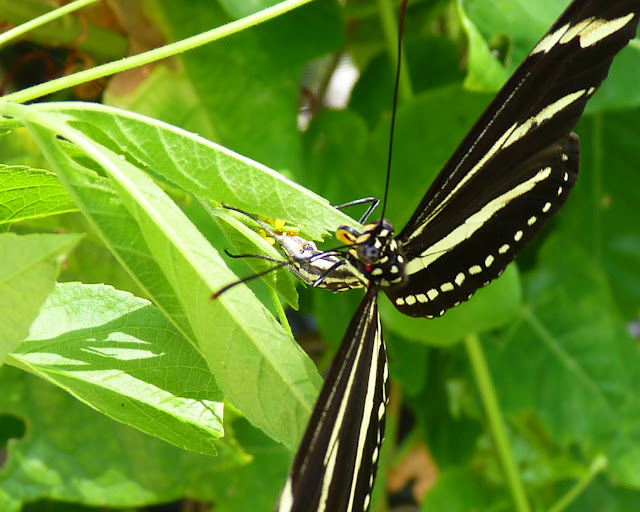In the sweltering heat of this sultry Independence Day, we managed to get some very good pictures of a Zebra Longwing butterfly ovipositing, or laying eggs, on our passionvine.
A close-up of the eggs reveals the ridges and pointed oval shape. This egg shape is common to the three heliconian species (Zebra Longwing, Gulf Fritillary, and Julia Longwing) that lay on passionvine, though the colors and laying habits differ among species.
In the photo below, note the butterfly's proboscis - it's completely covered in pollen. Zebra Longwings are among the very few species of butterflies that can digest pollen in addition to nectar. (They digest it externally, on their proboscis.) The extra energy from this pollen protein extends their lifespan dramatically - most butterflies live about two weeks as adults, but Zebra Longwings can live as long as six to nine months. As I tell kids at the museum where I work, imagine if you only drank soda all day long - how long would you live? Then imagine adding daily steak to your diet - now you have the extra nutrients you need to live a much longer life.
Zebra Longwings seem to be a fairly permanent fixture in My Florida Backyard these days, for the first time since we moved in nearly five years ago. It's fun to have Florida's State Butterfly hanging around as we celebrate our national holiday!




These photos are so cool!!!
ReplyDelete